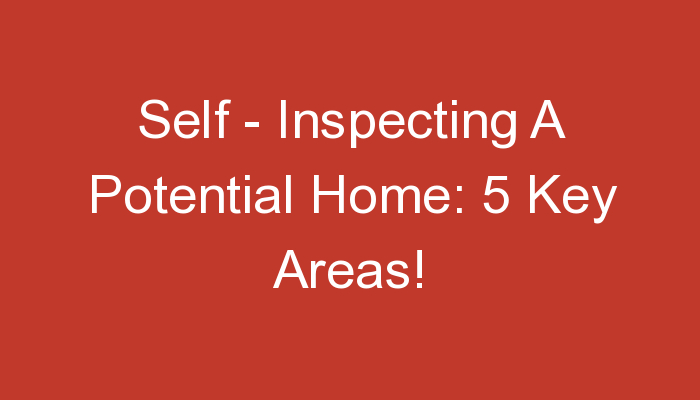Buying a home is an important decision and one that deserves careful consideration. But what happens if you find something that you love but it’s not right for you? What if the inspector finds something wrong with the property and you can’t get it fixed? In this blog post, we will outline five key areas to self-inspect when looking at a potential home. By doing so, you’ll be better prepared to make the best decision for yourself and avoid any unpleasant surprises down the line.
Inspecting your home for pests
1. Inspecting your home for pests:
-One of the first things you should do when inspecting a potential home is to look for any signs of pests or pests’ damage.
-Look for telltale signs of insects, spiders, rodents, or other pests such as droppings, chew marks on wood or furniture, areas where plants are wilting or dying prematurely, and evidence that insulation has been damaged.
-If you notice any of these signs in your home, don’t hesitate to contact a professional pest control company to take care of the problem.
2. Taking preventative steps:
-One key way to avoid having pests in your home is to take preventive steps yourself.
-This includes keeping an eye out for clues that pests might be living or hiding in your home and taking action before they have a chance to cause serious damage.
-Some tips for taking preventative measures include cleaning up food spills and pet messes promptly, using insect repellent regularly indoors and outdoors, sealing cracks around windows and door frames, and checking smoke detectors and carbon monoxide detectors monthly.
Inspecting your roof and gutters
When inspecting potential home, it is important to inspect the roof and gutters. Check for proper installation, cleanliness, and damage. If there are any concerns, have a professional verify the issues.
Inspecting your windows and doors
When inspecting a potential home, one of the most important things to do is inspect the windows and doors. This can help you determine whether you would feel comfortable living in the home, and if any repairs or replacements are necessary.
Inspecting your windows:
One of the first things to check when inspecting a home is the windows. Make sure they’re clean and intact. If there are cracks or holes in them, call an inspector to evaluate them further. Some other things to look for include: · Windows that don’t open and close properly · Windows that won’t let light in · Windows that are dirty or covered in debris Check for drafts by opening all of the windows at once and looking for any cold air coming in or out. If there are any drafts, it’s likely that the window frame needs to be replaced. Inspecting your doors: Doors should be solid and fit properly. Look for signs of water damage such as rot or mold, as well as weather stripping that has deteriorated or is missing altogether.
If there are any issues with your doors, have them inspected by an inspector right away. Checking your roof: Roofs should slope gently down towards the ground so water doesn’t pool on the roof; if it does, the roof may need to be replaced. Inspect gutters and downspouts to make sure they’re functioning properly; if not, they may need to be fixed/cleaned up as well as replaced if necessary
Inspecting your heating and cooling systems
1. Inspecting your heating and cooling systems is important for ensuring that your home is comfortable all year round!
2. Make sure to look for any signs of wear or damage, and be sure to compare your system with the manufacturer’s specifications.
3. Check the filters and grilles in your system, and be sure to replace them as needed.
4. Make sure all registers and valves are working properly, and test them by opening and closing the vents around your home.
5. Check the insulation on the walls, ceilings, and floors of your home for any signs of wear or leaks.
Checking for water leaks
There are a few key areas you should check for water leaks before purchasing or inspecting a potential home. Look for any areas where water is pooling or seeping, such as around windows, under doorways and in the ceilings. Try to figure out where the water is coming from and fix the issue before moving forward with your purchase.

